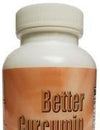I suggest that you make some changes to the way you eat first, and then implement the following strategy.
Add curcumin to your regime.
Curcumin has shown to reduce several inflammatory markers, one of them is TNF-alpha common to find elevated in many inflammatory conditions (Aggarwal BB, et.al., 2013).
Another common inflammatory marker shown to be reduced by curcumin is IL-6 (Derosa G, et.al., 2016).
Research also indicates that curcumin may reduce the inflammatory marker C-reactive protein, but the effect is dependent on the bioavailability of the preparation (Sahebkar A, 2014).
Since regular curcumin is not well absorbed, you need to be sure that the formula you use has much better bio-availability. That can make a big difference in the results you see.
With inflammation, you will also find increased free radical damage of tissue. For that reason, I also suggest that you take an effective antioxidant.
The most effective antioxidant you can take in my opinion is S-Acetyl Glutathione. The body is making glutathione, but it is making less as we get older, and the body is using more.
Glutathione plays an important role in the antioxidant defense and it also regulates the immune system.
Since glutathione deficiency contributes to oxidative stress, it plays a key role in both aging and the pathogenesis of many diseases (Wu G, et.al., 2004).
Inhibited glutathione synthesis induces a neuroinflammatory response (Lee M, et.al., 2010). This is another reason why it is important to support intra cellular glutathione levels. S-Acetyl Glutathione has shown to transfer into the cells where it is needed for protection from oxidative stress (Cacciatore I, et.al., 2010).
That’s the type of glutathione you need to take since regular glutathione is oxidized (destroyed) in the stomach and very little is absorbed.
References:
Lee, M., Cho, T., Jantaratnotai, N., Wang, Y. T., McGeer, E., & McGeer, P. L. (2010). Depletion of GSH in glial cells induces neurotoxicity: relevance to aging and degenerative neurological diseases. The FASEB Journal, 24(7), 2533-2545.
Wu, G., Fang, Y. Z., Yang, S., Lupton, J. R., & Turner, N. D. (2004). Glutathione metabolism and its implications for health. The Journal of nutrition, 134(3), 489-492.
Sahebkar, A. (2014). Are Curcuminoids Effective C‐Reactive Protein‐Lowering Agents in Clinical Practice? Evidence from a Meta‐Analysis. Phytotherapy research, 28(5), 633-642.
Derosa, G., Maffioli, P., Simental-Mendía, L. E., Bo, S., & Sahebkar, A. (2016). Effect of curcumin on circulating interleukin-6 concentrations: a systematic review and meta-analysis of randomized controlled trials. Pharmacological research, 111, 394-404.
Aggarwal, B. B., Gupta, S. C., & Sung, B. (2013). Curcumin: an orally bioavailable blocker of TNF and other pro‐inflammatory biomarkers. British journal of pharmacology, 169(8), 1672-1692.
Cacciatore, I., Cornacchia, C., Pinnen, F., Mollica, A., & Di Stefano, A. (2010). Prodrug approach for increasing cellular glutathione levels. Molecules, 15(3), 1242-1264.
Better Curcumin
The raw material in the new Better Curcumin is absorbed 65 times better than regular Curcumin and is very bio-available. Research has also shown that curcumin is very effective for reducing inflammation.







